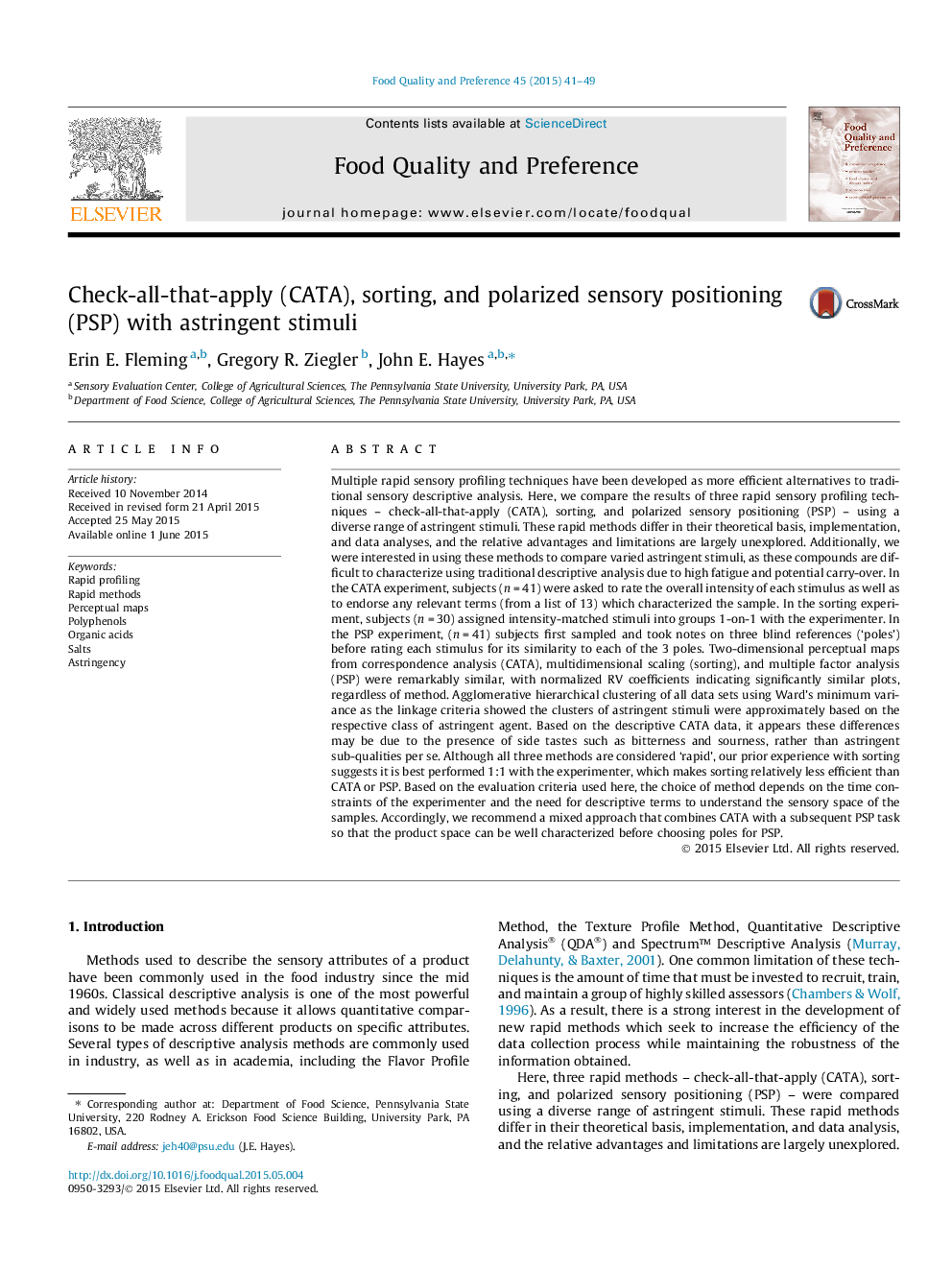| کد مقاله | کد نشریه | سال انتشار | مقاله انگلیسی | نسخه تمام متن |
|---|---|---|---|---|
| 4316921 | 1613152 | 2015 | 9 صفحه PDF | دانلود رایگان |

• Three rapid profiling methods – PSP, CATA and sorting were compared.
• Astringent stimuli included multivalent salts, organic acids and polyphenols.
• The resulting perceptual maps showed significant similarity across methods.
• Groups in the maps appeared to be driven primarily by side tastes of the stimuli.
Multiple rapid sensory profiling techniques have been developed as more efficient alternatives to traditional sensory descriptive analysis. Here, we compare the results of three rapid sensory profiling techniques – check-all-that-apply (CATA), sorting, and polarized sensory positioning (PSP) – using a diverse range of astringent stimuli. These rapid methods differ in their theoretical basis, implementation, and data analyses, and the relative advantages and limitations are largely unexplored. Additionally, we were interested in using these methods to compare varied astringent stimuli, as these compounds are difficult to characterize using traditional descriptive analysis due to high fatigue and potential carry-over. In the CATA experiment, subjects (n = 41) were asked to rate the overall intensity of each stimulus as well as to endorse any relevant terms (from a list of 13) which characterized the sample. In the sorting experiment, subjects (n = 30) assigned intensity-matched stimuli into groups 1-on-1 with the experimenter. In the PSP experiment, (n = 41) subjects first sampled and took notes on three blind references (‘poles’) before rating each stimulus for its similarity to each of the 3 poles. Two-dimensional perceptual maps from correspondence analysis (CATA), multidimensional scaling (sorting), and multiple factor analysis (PSP) were remarkably similar, with normalized RV coefficients indicating significantly similar plots, regardless of method. Agglomerative hierarchical clustering of all data sets using Ward’s minimum variance as the linkage criteria showed the clusters of astringent stimuli were approximately based on the respective class of astringent agent. Based on the descriptive CATA data, it appears these differences may be due to the presence of side tastes such as bitterness and sourness, rather than astringent sub-qualities per se. Although all three methods are considered ‘rapid’, our prior experience with sorting suggests it is best performed 1:1 with the experimenter, which makes sorting relatively less efficient than CATA or PSP. Based on the evaluation criteria used here, the choice of method depends on the time constraints of the experimenter and the need for descriptive terms to understand the sensory space of the samples. Accordingly, we recommend a mixed approach that combines CATA with a subsequent PSP task so that the product space can be well characterized before choosing poles for PSP.
Journal: Food Quality and Preference - Volume 45, October 2015, Pages 41–49